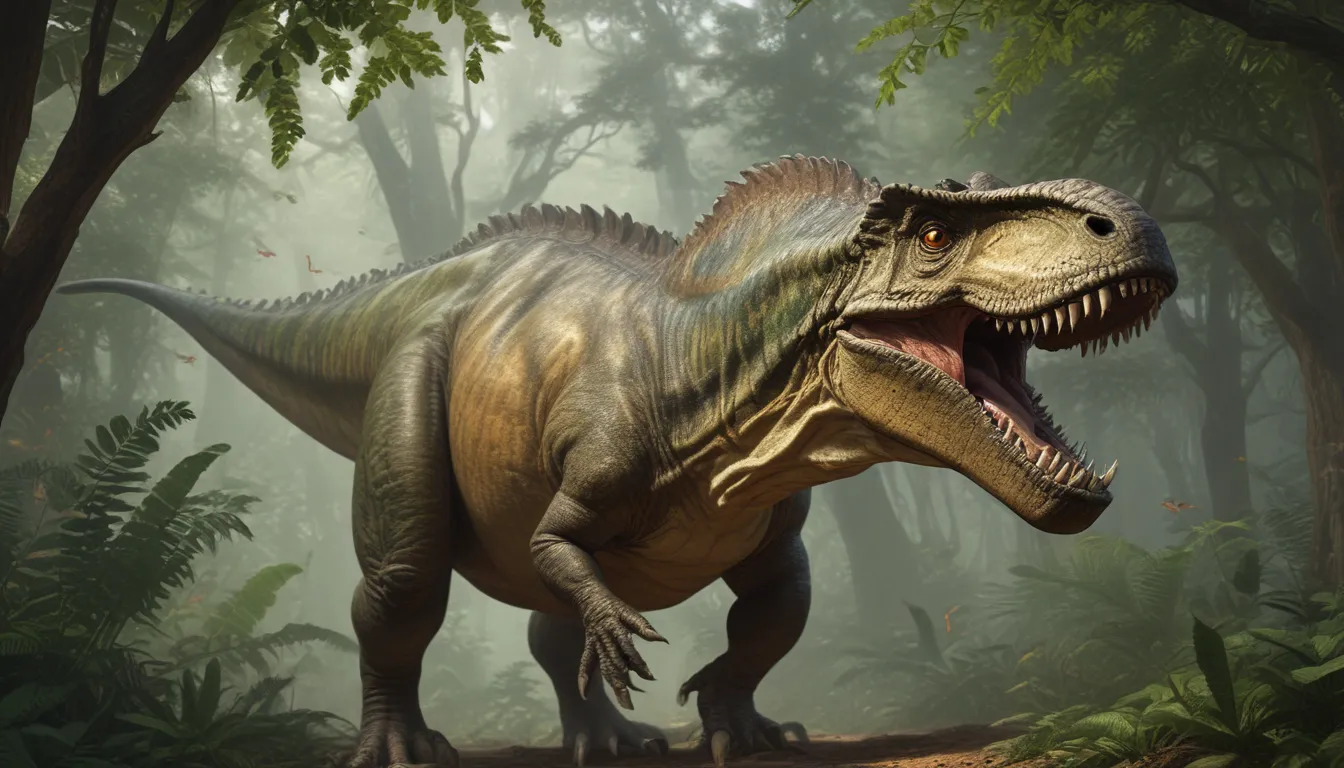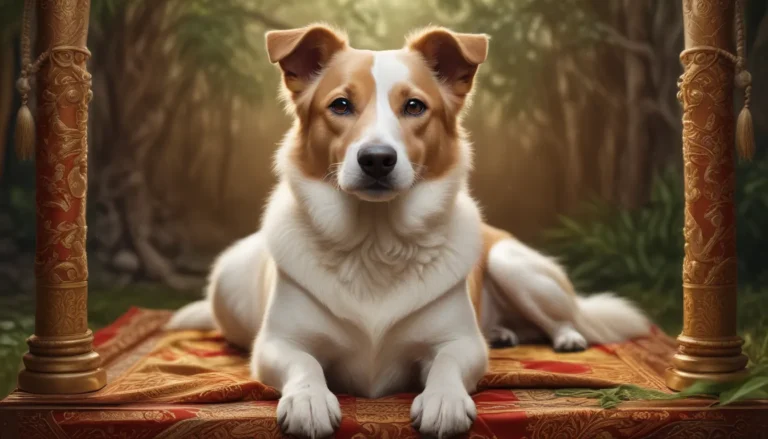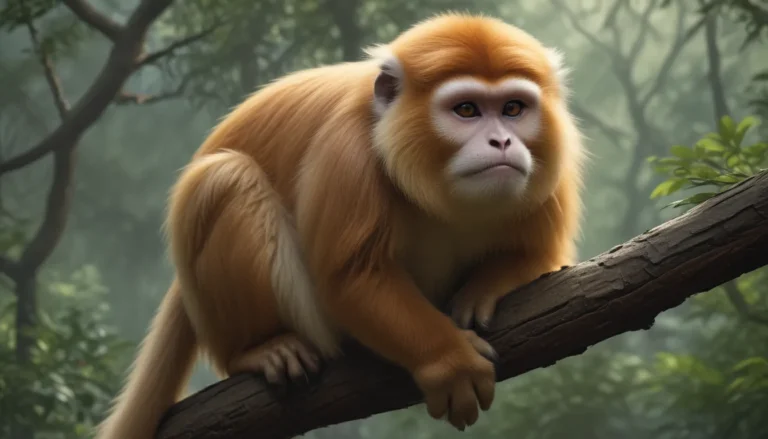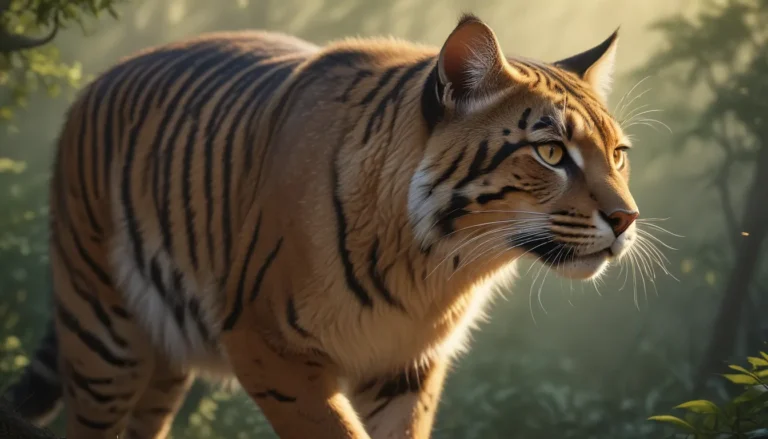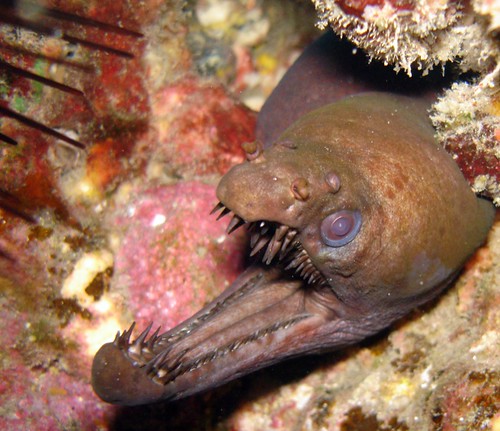The pictures we use in our articles might not show exactly what the words say. We choose these pictures to make you interested in reading more. The pictures work together with the words but don’t take their place. The words still tell you the important facts.
Are you ready to embark on an exciting journey back in time to explore the enchanting world of herbivore dinosaurs? These incredible creatures, known for their plant-based diets, roamed the Earth millions of years ago, shaping the ecosystems of their time. From the mighty Brachiosaurus to the agile Triceratops, herbivores came in all shapes and sizes, each with unique adaptations and behaviors. Join us as we uncover 10 captivating facts about these magnificent beings and unravel the mysteries of their diets, defenses, and social interactions.
Key Takeaways:
- Herbivore dinosaurs had unique teeth, digestive systems, and defensive adaptations to survive and thrive in their prehistoric ecosystem. They played a crucial role in maintaining the balance of the ecosystem by consuming plants and spreading seeds through their droppings. - Herbivore dinosaurs came in various sizes, from small to enormous creatures, and had diverse feeding strategies. They formed large herds for protection and evolved different adaptations for defense, such as horns, frills, and spines, to deter predators or engage in combat.
Herbivorous Dinosaurs: Masters of Plant Consumption
Specialized Teeth for Plant Feasting:
Herbivore dinosaurs possessed teeth designed for grinding and shredding vegetation, allowing them to efficiently extract nutrients from plants. These specialized dental structures enabled them to thrive on a diet rich in fiber and plant matter.
Strategic Herding for Safety:
To defend themselves against predators, herbivorous dinosaurs often traveled in large groups, forming herds that provided safety in numbers. This collective behavior allowed them to mitigate the risks of predation and enhance their chances of survival.
The Advantage of Long Necks:
Dinosaurs like the Brachiosaurus and Diplodocus sported remarkably long necks, granting them access to foliage that was out of reach for other dinosaurs. This unique adaptation enabled them to feast on vegetation high above the ground, expanding their dietary options.
The Digestive Prowess of Herbivore Dinosaurs
Complex Digestive Systems:
Herbivores boasted intricate digestive systems, including elongated intestines and microbial fermentation chambers. These anatomical features facilitated the breakdown of tough plant material, allowing dinosaurs to extract maximum nutritional value from their plant-based diets.
Ecosystem Stewards:
By consuming plants and dispersing seeds through their droppings, herbivorous dinosaurs played a pivotal role in maintaining the balance of prehistoric ecosystems. Their actions contributed to the diversity and abundance of plant life, shaping the environments they inhabited.
Defensive Adaptations for Survival:
Some herbivore dinosaurs, such as the Ankylosaurus and Stegosaurus, developed formidable defensive body armor in the form of sharp bony plates and spikes. These protective features served as a deterrent against predators and enhanced their chances of survival.
Diverse Feeding Strategies of Herbivore Dinosaurs
Grazers vs. Browsers:
While some herbivorous dinosaurs were grazers, feeding on low-lying vegetation, others were browsers, consuming leaves and branches from trees. This diversity in feeding strategies allowed herbivores to exploit a wide range of plant resources and adapt to varying ecological niches.
Beak-Like Mouths:
Certain herbivorous dinosaurs, like the hadrosaurs, sported beak-like mouths reminiscent of modern-day ducks. These specialized mouth structures enabled them to strip vegetation from branches with precision, showcasing their evolutionary adaptations for efficient plant consumption.
Varied Defensive Mechanisms:
Herbivorous dinosaurs evolved an array of defense mechanisms, including horns, frills, and spines, to deter predators or engage in combat with conspecifics. These adaptations showcased the diverse strategies employed by herbivores to ensure their survival in a world filled with threats.
The Splendor of Herbivore Dinosaurs: Diverse in Size and Form
From Tiny Titans to Colossal Behemoths:
Herbivore dinosaurs spanned a wide spectrum of sizes, from diminutive species like Hypsilophodon to colossal giants like Argentinosaurus. These creatures occupied different ecological niches, showcasing the vast diversity within the herbivore dinosaur group.
Conclusion
In conclusion, herbivore dinosaurs left an indelible mark on the prehistoric world, shaping ecosystems and contributing to the rich tapestry of life during the Mesozoic Era. Their specialized adaptations for plant consumption, unique defense mechanisms, and varied feeding strategies underscored the remarkable diversity and resilience of these magnificent creatures.
Herbivore dinosaurs not only played vital roles in ecosystem dynamics but also served as integral components of the food chain, sustaining carnivorous dinosaur populations. By studying these ancient beings, we gain valuable insights into the evolution and behavior of prehistoric creatures, unlocking the secrets of past environments and the interactions between different species.
The legacy of herbivore dinosaurs continues to captivate scientists and enthusiasts alike, inspiring a sense of wonder and curiosity about the ancient world. As we delve deeper into the captivating realm of these majestic beings, we uncover a wealth of knowledge that enriches our understanding of Earth's history and the complexities of the natural world.
FAQs
- What is a herbivore dinosaur?
A herbivore dinosaur is a species that primarily feeds on plants and vegetation, utilizing specialized adaptations for plant consumption.
- How did herbivore dinosaurs defend themselves?
Herbivore dinosaurs employed various defense mechanisms, including herding behavior, physical size and strength, and specialized protective features like bony plates or spikes.
- What are some examples of herbivore dinosaurs?
Popular herbivore dinosaurs include Triceratops, Brachiosaurus, Stegosaurus, and hadrosaurs like Parasaurolophus, each showcasing unique adaptations for plant-based diets.
- How did herbivore dinosaurs digest plant material?
Herbivore dinosaurs possessed specialized digestive systems, including elongated intestines and microbial fermentation chambers, to aid in the breakdown of tough plant fibers.
- Did herbivore dinosaurs face predators?
Yes, herbivore dinosaurs had natural predators such as Tyrannosaurus rex and Velociraptors, necessitating the development of defense strategies to ensure their survival.
- How large could herbivore dinosaurs grow?
Herbivore dinosaurs exhibited a wide range of sizes, from small and agile species to massive giants like Argentinosaurus, showcasing the diversity within the herbivore dinosaur group.
- How long did herbivore dinosaurs exist?
Herbivore dinosaurs first appeared during the Triassic Period, approximately 230 million years ago, and thrived until the end of the Cretaceous Period, around 65 million years ago.
- Why study herbivore dinosaurs?
Studying herbivore dinosaurs provides insights into ancient ecosystems, species interactions, and the evolutionary adaptations of plant-eating animals, enriching our understanding of Earth's natural history.
- Do herbivorous dinosaurs exist today?
No, all dinosaur species, including herbivores, became extinct around 65 million years ago. However, modern-day animals like elephants and giraffes serve as living examples of large herbivores.
- What caused the extinction of herbivore dinosaurs?
The exact cause of dinosaur extinction remains a topic of debate, with the leading theory suggesting a catastrophic event, such as a massive asteroid impact, led to widespread environmental changes that contributed to their demise.
Experience the wonder of herbivore dinosaurs as you delve into the intricate details of their lives, adaptations, and ecological roles. Each species holds a unique story waiting to be unveiled, offering a glimpse into the diverse world of prehistoric creatures that once roamed the Earth.
Trust in our commitment to delivering accurate and engaging content, created and reviewed by a dedicated team of editors and contributors. Explore the wealth of knowledge and insights shared on our platform as you immerse yourself in the fascinating realm of herbivore dinosaurs, an awe-inspiring chapter in Earth's history.
